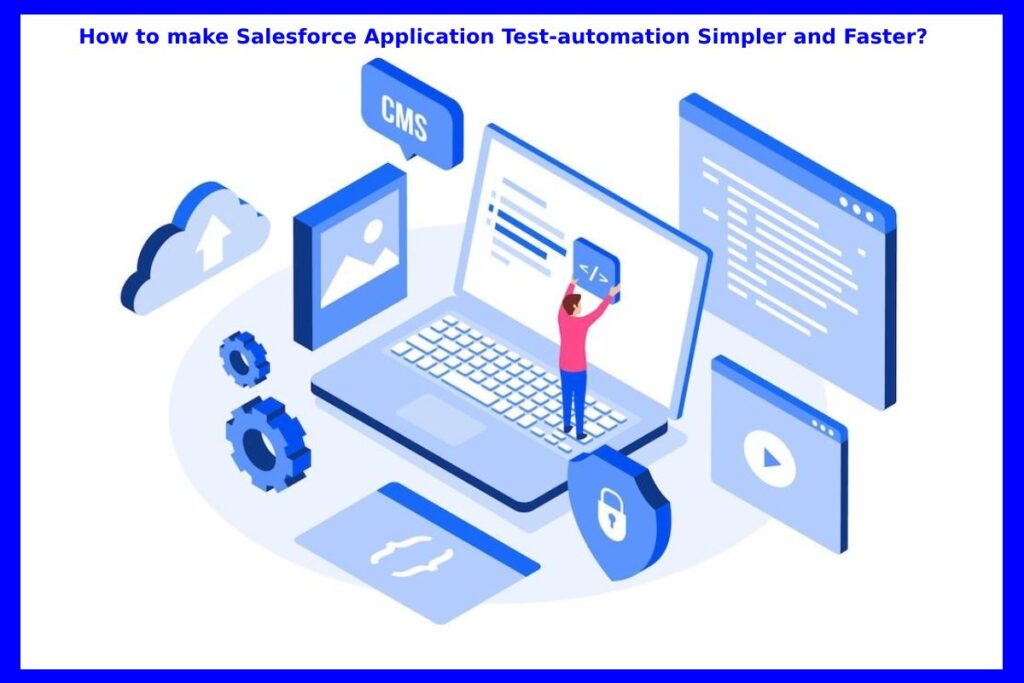Salesforce Application Test-automation – Salesforce is the most popular CRM and has a huge user base globally. One of the greatest reasons their customers stick around is their commitment to continuous innovation. Salesforce never fails to offer its customers seasonal updates along with occasional patches.
The seasonal updates of Salesforce provide new and enhanced features which enable the customers to perform their business operations more efficiently. Though these customers reap the benefits of improved business process operations, there is a high risk of existing features, workflows, and integrations getting broken due to new internal releases.
Salesforce application testing is imperative to ensure that the existing features function as required and that nothing in your Salesforce Org, including integrations with other applications, gets broken with new seasonal releases.
Why are Open Source tools not ideal for Salesforce Application Testing?
Many organizations opt for Selenium for test automating the Salesforce applications. Selenium helps to create test automation scripts to perform continuous test automation to enable the QA team to validate the Salesforce application at each step.
Open source tools like Selenium are not ideal for testing complicated applications like Salesforce. Following are the reasons why Salesforce test automation is not viable through open source tools like Selenium:
Dynamic Elements: Salesforce forms are dynamic, which makes it difficult for Salesforce testers to depend on XPaths while developing the test scripts. Testing an environment with no static id, name, or class is much more difficult because the element cannot be hardcoded. So during each update , the QA team has to change and create new test scripts which is a great burden.
Steep Learning Curve:As most of the available test automation tools are programming based, business users find it challenging to test-automate Salesforce applications. Moreover, they don’t have time to learn code-based platforms. Hence, they have to depend on the IT team to create automation test scripts. Due to these reasons business users fail to contribute to Salesforce Testing.
As we have understood the limitations with code based testing platforms for Salesforce application testing, let’s overview the better alternatives.
The major pain point in leveraging code-based test automation tools is that it burdens both the QA team and the business users to work with automation test scripts. It lengthens test case creation time for QA teams and business users lack programming knowledge, resulting in a heavy maintenance burden.
This is problematic as test automation platforms must reduce the time and effort of QA teams and business users rather than being a burden for testing Salesforce applications.
Better Alternative over Code-Based Testing Platforms:
Low Learning Curve: No-code test automation tools are easy to learn and do not require heavy training for business users to learn these tools. Business users can quickly start working on these tools due to features like drag and drop, record and play, etc
Better Alternative to Handle Dynamic Elements:
Smart Object Recognition: Robust test automation platforms powered by AI and machine learning consists of Smart Object Recognition technology which helps in automatically identifying the dynamic objects.
Better Alternative to Handle Risks
Self-healing test scripts: Whentest scripts get broken due to the dynamic object properties like Name, ID, Xpath, or CSS, self-healing test scripts can fix broken test cases automatically, saving days and hours of working time on fixing the broken test scripts. Self-healing test scripts definitely reduce the test maintenance burden.
Conclusion:
Comprehensive test automation tools like Opkey offer advanced test automation technologies likeSelf healing test scripts, Smart Object Recognition, and No-code Automation to reduce test maintenance burden for QA teams and provide a low learning curve to simplify test automation for business users.

